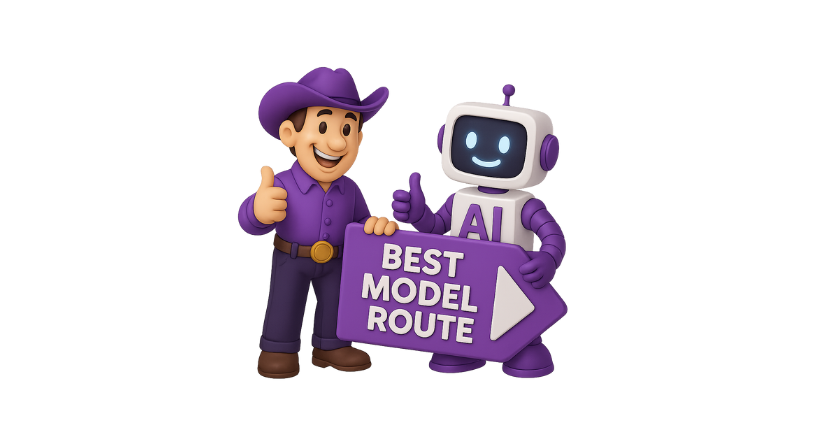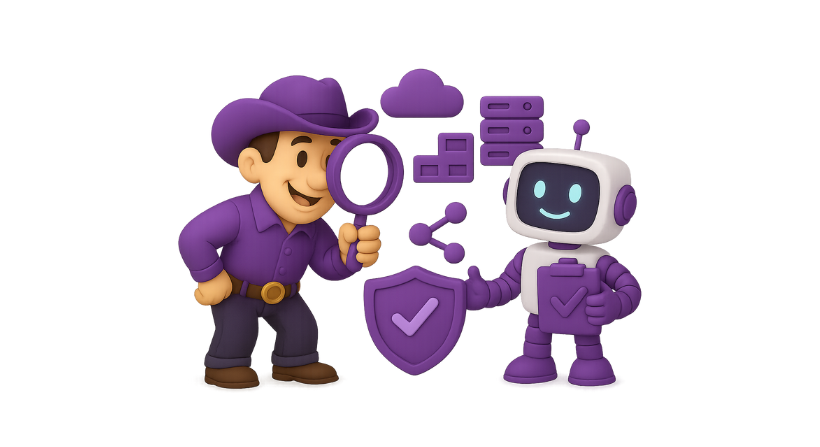As artificial intelligence (AI) becomes more deeply embedded in business operations, one reality is becoming clear that innovation alone is not enough. It is no longer just about building fast, intelligent systems. Today, success with AI also depends on how well organisations govern it.

The growth of large language models (LLMs) like GPT-4, Claude, and Gemini has opened doors to new opportunities, but also new risks. These systems are powerful, but they are also expensive, unpredictable, and hard to monitor at scale. Without strong oversight, AI usage can quickly spiral out of control, both financially and operationally.
That’s why AI governance has emerged as a key pillar of responsible machine learning. It is the framework that helps businesses manage the risks, rules, and responsibilities that come with adopting AI.
Innovation, which is a core space AI is leveraged across businesses, is best achieved in a space where people understand and know the limits they need to operate within, governance therefore is essential for your teams to innovate effectively.
In this article, we’ll explore what AI governance means, why it matters, and how businesses can put it into action, before it becomes a problem they can no longer ignore.
Understanding AI Governance
AI governance refers to the systems, processes, and controls that help organisations manage the use, cost, security, and compliance of artificial intelligence technologies.
It is not just a technical challenge. Governance connects teams across engineering, product, finance, and compliance. It helps them work together to ensure that AI usage aligns with business goals, stays within budget, and meets legal and ethical standards.
Good AI governance answers questions like:
- Who can use which AI models, and for what purposes?
- What data is being used in prompts or training?
- How much is being spent on AI across the company?
- Are we compliant with data privacy laws and internal policies?
- How do we prevent overuse, misuse, or data exposure?
In short, AI governance provides structure. It reduces chaos. And it helps organisations scale AI use with confidence.
Why AI Governance Is Now Essential
Five years ago, AI adoption was largely experimental. Teams were testing new tools, building prototypes, and exploring possibilities. But today, many of those tools have become part of core infrastructure.
Customer support is powered by AI chatbots. Product teams are shipping LLM-powered features. Engineers are embedding AI into workflows. AI is no longer optional, it is operational.
But with increased usage comes increased risk. Companies now face new challenges, including:
- Teams deploying AI tools without approvals or oversight.
- Sensitive data being used in third-party models.
- Unpredictable and often excessive API costs.
- No visibility into who is using what, and how frequently.
According to a recent IBM report, 74% of business leaders say they are concerned about the risks associated with AI, yet only 30% have a defined AI governance strategy in place.
This gap can be costly. Without governance, companies open themselves up to financial waste, security threats, and compliance violations. Worse, they lose the ability to scale AI safely and sustainably.
Key Elements of AI Governance
To build a strong AI governance strategy, organisations typically focus on five core areas.
Access Control
This involves defining who can use which models and for what purpose. Without access control, AI usage can become fragmented and untraceable. Role-based permissions and scoped API keys help enforce responsible access across teams.
Usage Monitoring
Tracking usage is essential. Companies need to know which teams are using which models, how often, and at what cost. Without usage monitoring, there is no way to understand the impact of AI adoption or to reduce unnecessary spend.
Cost Management
LLM usage can grow quickly, and so can the bills. Governance includes setting model usage policies, assigning spend limits, and breaking down costs by team or product. This makes AI budgeting predictable and justifiable.
Security and Compliance
AI tools must operate within security and legal frameworks. Governance ensures data is handled correctly, only approved providers are used, and usage complies with standards like GDPR, SOC 2, or HIPAA. Audit logs and activity history are crucial for compliance.
Accountability
Finally, governance ensures that every part of AI usage has an owner. That means assigning responsibility for usage, budget, and outcomes. When issues arise, there is a clear path for resolving them.
Quick link: The AI Trade-Off Triangle
The challenges businesses face
Although the case for AI governance is strong, many organisations struggle to put it into practice. The most common challenges include:
Lack of visibility: Teams use models like GPT-4 or Claude without knowing what they cost, how often they’re called, or whether cheaper options could be used instead.
Uncontrolled access: Shared API keys are still the norm in many organisations, making it impossible to track or manage individual usage.
No internal cost structure: Finance teams are left to deal with unclear AI expenses with no ability to attribute them to specific teams or products.
Security blind spots: Without scoped access, audit logs, or usage restrictions, organisations can’t prevent data exposure or meet compliance standards.
These issues often go unnoticed until a large bill arrives, or a security incident occurs. By then, it’s too late.
How WrangleAI Supports AI Governance
WrangleAI was built to solve the exact governance problems facing today’s AI-driven teams. It provides a unified platform that helps organisations manage, monitor, and optimise AI usage across models, teams, and environments.
Real-Time Usage Tracking
WrangleAI tracks every token, model call, and API interaction. Teams can see exactly who used what, when, and at what cost. This data can be filtered by team, product, or environment, bringing total transparency to AI usage.
Scoped API Keys and Role-Based Access
Instead of relying on shared credentials, WrangleAI allows companies to issue unique, scoped API keys for each team or use case. Role-based access ensures only authorised users can access specific models, and spend caps prevent overuse.
Internal Chargebacks and Cost Attribution
WrangleAI makes it easy to assign AI costs to specific teams or features using its Synthetic Groups system. This supports internal billing, budget forecasting, and performance accountability.
Alerts, Limits, and Controls
Set model usage policies, receive real-time alerts, and enforce spending thresholds. WrangleAI allows teams to avoid billing surprises while ensuring AI usage stays within approved guidelines.
Enterprise-Ready Governance Features
For enterprise teams, WrangleAI includes support for SSO, RBAC, audit trails, BYOK, and other compliance-focused features. This makes it suitable for both fast-moving startups and security-conscious enterprises.
Final Thoughts: AI Governance Is a Strategic Necessity
AI governance is no longer something companies can treat as optional or “nice to have.” As AI systems move from experimentation to mission-critical infrastructure, the need for structure, accountability, and control becomes urgent.
Strong AI governance helps teams scale safely. It protects budgets, ensures compliance, and prevents risk. Most importantly, it empowers organisations to use AI responsibly without losing visibility, speed, or trust.
If your organisation is growing its AI usage but lacks the tools to govern it, it’s time to act.
WrangleAI gives you the control plane your AI stack needs.
Track usage, enforce limits, and secure your data. Request a demo today and see how WrangleAI brings structure to your AI operations.



